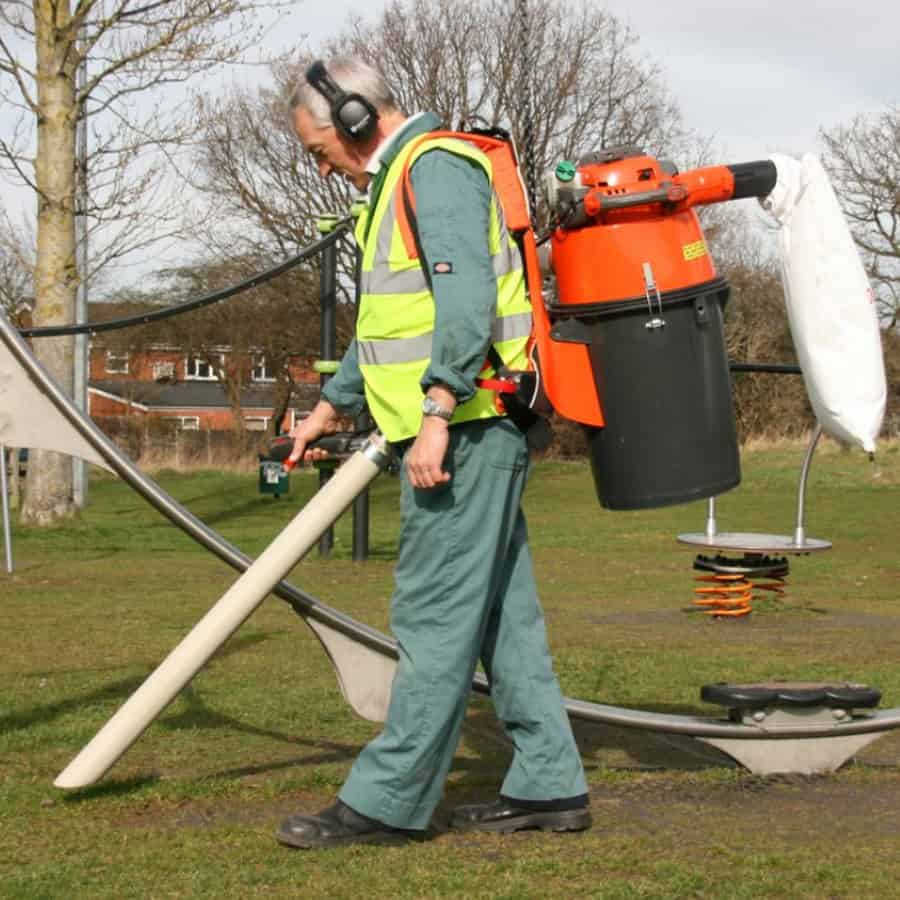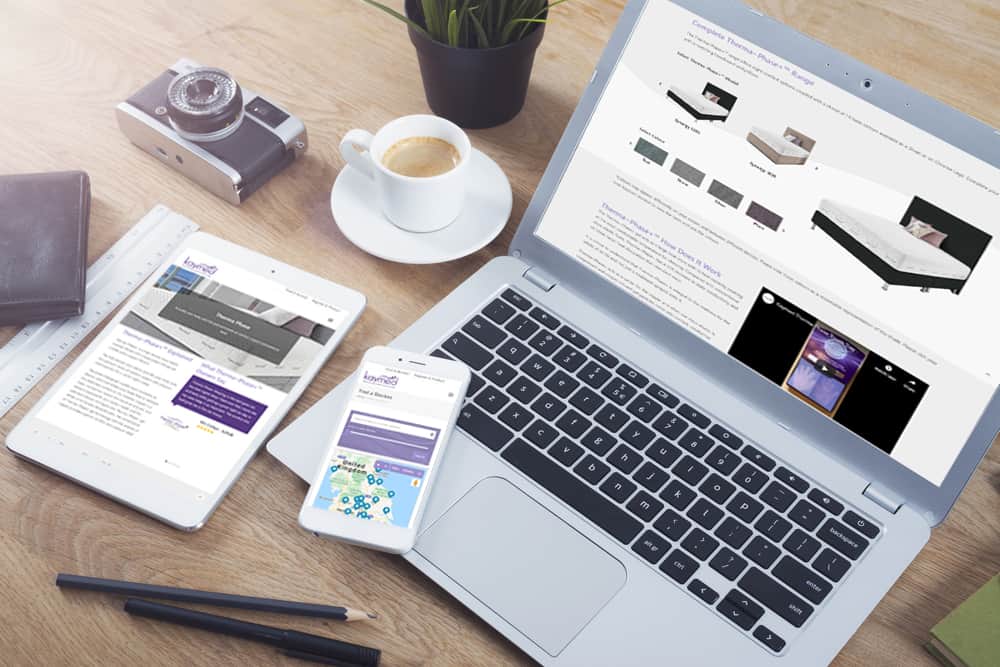Relationship Selling Approaches
Relationship selling is an approach to sales that focuses on building and maintaining long-term relationships with customers. It involves building trust, understanding customer needs, and providing personalised solutions to meet those needs. Here are some common relationship selling approaches:
- Consultative Selling: This approach involves actively listening to customers, asking questions, and identifying their needs before proposing solutions. The goal is to understand the customer’s business and challenges and provide a customised solution that addresses their unique needs.
- Relationship Building: This approach involves developing a personal relationship with the customer. This can be achieved by making small talk, remembering details about the customer’s personal life, and showing genuine interest in their needs and concerns.
- Solution Selling: This approach focuses on providing solutions to the customer’s problems rather than just selling products. The salesperson works closely with the customer to understand their needs and provides a tailored solution that meets those needs.
- Customer-Centric Selling: This approach puts the customer at the centre of the sales process. The salesperson works to understand the customer’s business, goals, and challenges, and then provides solutions that align with those needs.
- Trust-Based Selling: This approach is based on building trust with the customer. The salesperson demonstrates their expertise, reliability, and honesty, and works to establish a long-term relationship built on mutual trust and respect.
Long Term Relationship Selling – Sales Is As Easy As ABC
I heard a lovely story this week about the stages of an A,B, C training programme that a large company used within the sales force as an approach to increasing sales.
When they initially started the programme the process was
- A: Acknowledge (relationship building)
- B: Building rapport
- C: Close
The company strived to build great customer relationships and found that the sales training programme wasn’t leading to an increase in sales.
Upon a more detailed investigation it was identified that staff saw the challenge of offering an unrivalled level of service as counter intuitive to selling.
An almost second derivative was unintentionally identified as being necessary in order to make the transition from service to sales.
- A: Always
- B: Be
- C: Closing
Relationship Selling Approaches – Marketing helps with the ABC
Thankfully some great marketing kicked in to help the sales process and a process of very detailed and intensive communication took place with customers to identify why they shopped. This process identified some key factors that were of importance to the customer. They believed they were honestly communicated to when looking to make a product selection and could trust the advisor. They believed that they were able to build rapport and a relationship. Importantly this all led to the fact that the customer was happy to be advised on what to buy and in fact could be sold to without selling.
The ABC process at this point was refocused on
- A: Attitude
- B: Behaviour
- C: Commitment
Long Term Relationship Selling
If you are a business that is looking at long term relationships could your approach to selling be improved. Is the approach that you adopt the same through out the organisation especially those who have direct contact with customers. For more ideas and inspiration click here. To contact Andrew Goode an experienced marketing and sales professional click here
Presentation Skills – The benefit of using props
Children’s Glasses, Nelsons Sail, A football, Oar and a Canary
I went to a networking presentation this week where the speaker instead of doing death by PowerPoint used a series of props to demonstrate / illustrate some of the core principles within his talk. Now 4 days after the presentation I can still remember the 4 points where a prop was used. So lets go through the 4 props that showcased his presentation skills
Children’s glasses
The issue of every company needing a vision, therefore the link of glasses. The reason for children’s glasses in that as youngsters quite often you don’t have boundaries or fears. So before you have had the fight taken out of you a vision should be just that. None of this ‘No we cant do that’
Nelson’s Sail
A fantastic picture of the sail from Nelsons ship Victory which had the canon ball holes in it from the battle. Now the topic in question was actually Sales and the need to generate profitable sales so purely a play on words, but a great way of engaging with the audience
A football
All companies should be measuring the key metrics within a company
- Turnover
- Sales
- Profit
- Number of new enquiries
- etc
The measurement is therefore critical but in many companies measuring stuff doesn’t result in any action. The rationale of the football was therefore to illustrate the concept of Scoring. That way you can share results , make measurement competitive and suddenly the measurement takes a whole new approach.
The Oar from a boat
For oar read Order, so a great way of getting you to think of the concept of needing to get order , systems, processes in place
A Canary
Years ago canaries used to be taken down the mines to act as an early warning system. When the quality of the air deteriorated the canaries fell off the perch and the miners could exit. Within a business there is a need to identify early warning signals for what is working and and not working
In summary – Really good to see an accountant deliver a presentation that was engaging and entertaining (and without PowerPoint).
Presentation Skills
The use of props for me definitely helped enforce the key messages being presented
Public Speaking Presentation Errors And How To Avoid Them
I recently attended a prominent conference where the main speaker (who wont be named) recently committed a number of presentation blunders.
Presentation Mistake 1: Too much content
The speaker had a twenty minute slot in which to engage with the audience. Unfortunately he came with a previously used presentation with 90 minutes worth of content. Rather than remove or ignore any of the content the approach of talking VERY VERY quickly was adopted. So what was already a complicated and thought provoking subject was suddenly delivered at a rapid speed. Now this did have an interesting effect in that it appeared that almost half the audience switched off from trying to listen and started checking their mobile phones. I was genuinely interested in the subject matter so was trying my hardest to concentrate on the content but the challenge of
- talking very quickly
- rapidly flicking through slides
- not looking at the audience (due to mistake 3)
- resulted in me gaining absolutely nothing from the presentation, Less would definitely have been more in relation to using 5 slides instead of the 35 shown
Presentation Mistake 2: No emotion
A monotone, emotionless delivery regardless of the content of the presentation is always going to reduce its impact. This speaker had a single level of delivery from start to finish, even the frenetic pace of the delivery was unable to give the presentation any dynamism. The monotone delivery resulted in zero engagement with the audience
Presentation Mistake 3: Reading the on screen slides
Possibly one of the worst presentation mistakes is where you have powerpoint slides filled with text that you show on screen and then proceed in reading directly from the screen. I believe that a human can read 7 times faster than a person can speak. Now in this case the speaker was talking very fast but.. Now there are perhaps going to be instances where you will read some content from the slide but not on every slide.
Presentation Mistake 4: Lack lustre visuals
If you are going to use PowerPoint as part of your overnight presentation then you should really make use of its powerful visual capabilities. Now I’m not talking about animations wooshing in from the side, coming to a screeching halt or the ease at which ‘clip art’ can be added. If you think about the messages that you are trying to communicate within a limited time frame then powerful visuals can act as a compelling support media to the spoken word. I will write about developing PowerPoint slides in a future article. In our speakers case it was slides full of very small text.
Now compare this approach to the next speaker who had a 20 minute slot and by all accounts was more used to having a couple of hours to present on the complex topic. So how did they manage to present so much more effectively
- Content: At the start of the presentation the speaker outlined that he only had 20 minutes and would cover three key points. The presentation he was going to deliver had been specifically developed (and tested for a 20 minute slot)
- Emotion: The speaker on entering the stage had a visual slide that caught the attention of the audience and with his well practised 30 second introduction immediately engaged with the audience. The presentation was delivered at speed that allowed for pauses; and included some appropriate humour.
- Reading slides: The speaker was passionate and knowledgeable about his subject. This meant that he didn’t have to refer to notes or scripts. This meant that he kept eye contact with the audience and was able to project his voice as opposed to looking down into notes
- The speaker had 5 highly visual slides that perfectly complimented the point he was trying to put over
- 2 weeks after the presentation I can still remember the 3 key points the speaker said he wanted to communicate.
Want to pick up the phone and speak to us about your Website project?
Call us on: 01733 361729 mail: solutions@bdolphin.co.uk
Exhibiting At Trade Show’s Mistakes
The Benefits Of A Well Organised Trade Show Or Exhibition
- A well targeted and promoted trade show, should attract the type of people you will be interested in talking to and importantly who will have an interest in your product or service
- In the space of a few hours / days you can meet a high volume of people.
- By exhibiting at the trade show, often through the organiser you can often purchase or gain a list of all the attendees
- Many trade shows now have break out sessions or key note speaking sessions whereby you have the opportunity to present and be seen as an authority within the industry
- Trade shows can be a very cost efficient way of building a prospect list. For example if it costs £1000 to attend a trade show, and you get to meet and speak to 50 target prospects then that equates to a cost of only £20 per lead
Cost, Time and Effort
So the key resources required for the trade show are
- Money – cost of stand space, exhibition materials, staff (salaries, travelling, accommodation entertaining)
- Time – preshow, during the show and post show
Mistake Number 1: Not engaging with show visitors
So you have been to all the effort of booking the space, organising the stand, getting a listing in the show guide and event pr. The show opens, visitors arrive and you sit down behind a protective force field (table) and get on your mobile phone to avoid human interaction.
If you are going to exhibit at a trade surely one of the primary functions is to engage with visitors. So next time you are organising event identify what will make it easier for your staff to engage with visitors
Mistake 2: Being seen as just the same as everybody else
Last month I was lucky to visit 2 major trade shows being held at the NEC. There were in total 5 industry shows taking place each aimed at a unique audience. The pre show promotion for each of the individual shows had been excellent and the range of seminars and related activities idea. All in an attempt to encourage those interested with the sector to attend.
Stainless Stainless Everywhere
So when I turned up at the first trade show, waved my pre-registered badge and entered I was greeted by the first exhibitor who had a bank of gleaming stainless steel equipment whirring, whizzing and rotating. I was at the processing and packaging machinery exhibition. As I looked down the multiple aisles I was greeted by row upon row of whirring, whizzing and rotating stainless steel machine’s. After only a few minutes I was completely a blur with Stainless Steel and every exhibition stand morphed into the next.
Please no more rapid prototype components
From the PPMA I went into TCT the rapid prototyping show. No stainless steel here – every stand was fully loaded with multi- coloured rapid prototype produced skulls, figurines or components. Again every stand looked the same whilst trying to convey “my components are better than your components”. I believe even the most enthusiastic visitor would have struggled after a while to stop and pay attention at a stand.
Be seen as different
So one of the key challenges is that by attending a trade event targeted at your potential customers it is very likely that your competitors are going to be attending. So next time you are organising an event identify what will make it easier for your display and message to stand out and draw in visitors. Its the classic challenge what can you do to differentiate yourself
Relationship Selling Approaches – People Buy From People
Exhibiting At Trade Show’s Mistakes 3: Are The Salespeople Engaging
Your at the trade show and after months of planning and the maddest, busiest 48 hours prior to the show doors opening you are ready to communicate the message about your products or services and hopefully fill your customer pipeline for the next twelve months.
Its All About The Sales People
So why have people on the stand who don’t want to engage with visitors. Here are some recent observations
- As a person walked onto an empty stand the sales person avoided eye contact and started to reorganise sales leaflets.
- I watched in disbelief as a visitor went to a stand where 3 people stood by the product display. The visitor was reading the point of sale display, picked up some sales literature, watched the continuous loop video and when nobody engaged with them … left
- The sales person on the stand sat on the trade stand, declined the opportunity to stand up and engage with a visitor, a blatant case of I really cant be bothered
- I know that we all have to eat. But when you are on a exhibiting when its your turn to eat you really shouldn’t eat on the trade stand, it just doesn’t seem professional
- Finally we all know that trade shows can be a drag, tiresome, a drain etc, but if you look miserable that will affect those walking past. A pleasant smile will go along way if you want to engage with people
Exhibiting At Trade Shows Mistake #3 – Be seen as different
So next time you are organising an event identify what you can do to make it easier for your staff to be happy and enjoy themselves (whilst remaining the consummate professionals that they are). Think about the last time you went to speak with someone who looked miserable.
Exhibiting At Trade Show’s Mistakes 4: Not Capturing The Details Of People Who Visit
Well organised trade shows will have spent huge amounts of time and money building a list and communicating with the list to encourage them to attend.
For those who attend their details will have been captured as the show badge is produced. On entry the badge will be scanned which can identify how often you entered the show
Its Not Just About The Technology
So when someone visits your stand and says “Please can you send me a brochure” and you say “Please let me scan your badge”, is there really data capture taking place.
- So now you have captured the details of the person – based on the information they provided when they signed up for the free admission to the event
- Are they really
- A senior manager
- With ultimate decision making capabilities
- Of a 100 employee plus company
- With a turnover of over fifty million pounds
- Interested in …
- Whose name just happens to be Bert Smith
- Now I’m not saying that people deliberately give misinformation but perhaps not everybody is as honest as yourself
- What if you had engaged in conversation
- Asked them if there was anything they were specifically interested in
- The type of industry they worked in
- The problems that they faced
- What had made them come to your stand
- Gained their business card
Building A profile
Now if all the information you gained through conversation was captured on the customer prospect database you have significantly more information to consider when
- You conduct a post show analysis and try and identify if the quality of people visiting the stand had improved
- You prioritise which of the prospects should be dealt with
- You send them post show information
Mistake 5: People Haven’t Got A Clue What You Do ( Poorly designed graphics)
Your trade stand space has been secured and now have to decide what to put into the space. Perhaps you can fit in pop up stands, or banner stands or even have a bespoke stand made for the event. So as part of the planning you come up with key messages or information that you think will be of use to a visitor at the show
This Is How It Often Goes Wrong
- You identify all the products or services that you want to make people aware of that you offer and find this runs to a list of over 20 items
- You also want to include information about
- Your website address which is of course isn’t as short and snappy as www.diy.com or www.theaa.com
- Your logo – and you want to have that really BIG so that people know who you are
- You give the designer 48 hours to come up with a creative graphics / visuals
- As you have so many products and services and you don’t want to focus on a specific customer type you think it best to include a generic type of imagery
- Between the people within the company there is no one who is actually formally skilled with a marketing or design qualification. This automatically puts you at a disadvantage in terms of identifying the messages or imagery that will create impact to a passing visitor
- You are trying to keep costs down so therefore don’t want to waste money o expensive fluffy / frilly marketing support services
- Of course there are no exhibition objectives or campaign requirements as you have no marketing strategy
Relationship Selling Approaches for an SME Manufacturer
For an SME manufacturer, relationship selling approaches refer to strategies and techniques used to build strong and lasting relationships with customers. These approaches focus on understanding customer needs, providing personalised solutions, and cultivating trust and loyalty. Here are some common relationship selling approaches:
- Building Rapport: Establishing a genuine connection with customers is crucial. This involves active listening, empathy, and showing a genuine interest in their business and challenges.
- Needs Assessment: Conducting a thorough needs assessment helps understand the customer’s requirements, pain points, and goals. This information allows you to tailor your product or service offerings accordingly.
- Consultative Selling: Taking on a consultative role, you act as an advisor or expert to the customer. By providing valuable insights, solutions, and guidance, you position yourself as a trusted partner rather than just a vendor.
- Customisation and Personalisation: SME manufacturers can differentiate themselves by offering customised products or personalised services that meet the unique needs of individual customers. This demonstrates your commitment to their success.
- Follow-up and After-sales Support: Maintain regular communication with customers even after the sale is completed. Provide prompt support, address any concerns, and seek feedback to ensure customer satisfaction and foster long-term relationships.
- Relationship Building Activities: Engage in relationship-building activities such as networking events, industry conferences, and customer appreciation programs. These opportunities allow you to connect with customers on a more personal level and strengthen relationships.
- Customer Education: Share knowledge and expertise through educational materials, webinars, or workshops. By providing valuable information and insights, you position yourself as a trusted resource and build credibility.
- Long-term Relationship Focus: Instead of focusing solely on immediate sales, prioritise building long-term relationships. This involves maintaining regular contact, understanding evolving customer needs, and adapting your offerings accordingly.
- Customer Feedback and Continuous Improvement: Actively seek feedback from customers and use it to enhance your products, services, and overall customer experience. Demonstrating a commitment to continuous improvement reinforces your dedication to their success.
- Collaboration and Partnership: Look for opportunities to collaborate with customers on joint projects or initiatives. This collaborative approach strengthens relationships, fosters innovation, and creates mutually beneficial outcomes.
By adopting relationship selling approaches, SME manufacturers can build strong customer relationships, increase customer loyalty, and differentiate themselves in the marketplace. These approaches prioritise understanding and meeting customer needs, providing exceptional service, and nurturing long-term partnerships. For more information on relationship selling approaches contact Andrew Goode at Blue Dolphin















